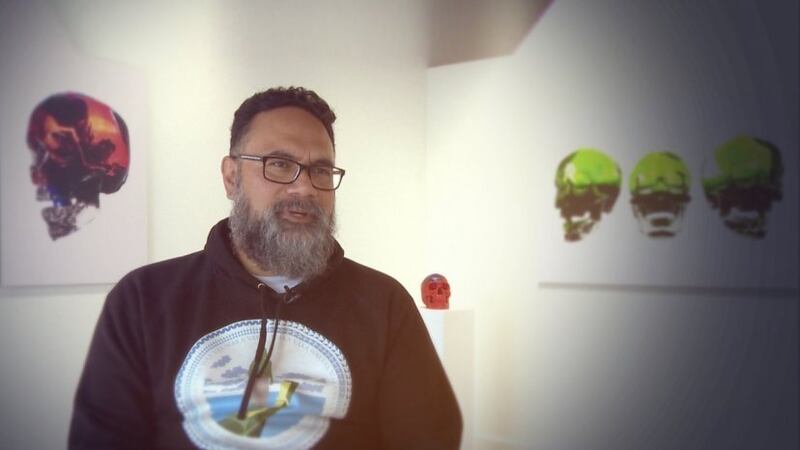A Sāmoan photographer has used glass skulls and filled them with water and food colouring to tell his life story of growing up in Aotearoa.
Raymond Sagapolutele has just finished showcasing these photographs at his exhibition, which he called Aua e te fefe, a Sāmoan phrase meaning Don't be afraid.
His theme is inspired by his grandmother who used to say that phrase to him when he was a child but also because he does not want the public to be afraid of his work.
“It came about because I work with these images, the skull motif a lot, especially with this show. And one of the things that I had forgotten was that skulls are a loaded symbol.
"Even though the work is heavily entrenched in my fa’a Sāmoa, and as someone who has grown up here, some people don’t see that straight away. So when they see them and I've seen it sometimes, they kind of go, 'oh true', so the idea is ‘don’t be afraid’ of the work,” Sagapolutele says.
Raymond wants people to see his art without fear.
Sāmoan view
The images are photographs taken of vodka bottles with the neck and background edited out. The exhibition has two rooms both displaying different parts of Sagapolutele’s life and thoughts.
In one room are black canvas photos showing his Sāmoan culture, with the other photos on white canvasses.
“The other thing with the work in this room is that they all come with white backgrounds. So the white backgrounds on these represent ‘The Miti’. In Sāmoan it’s the dreamscape, it’s the mind, it’s where your thoughts and imagination run wild, more or less.
"This work as opposed to the other work is internal. This is what is going on in my head. This is how I talk about my struggles with how I deal with the world,” he says.
The skeletal remains of loved ones are respected and dealt with differently in many cultures. The Auckland University of Technology (AUT) photography teacher wants to educate others on how the Sāmoan people view them.
“In Aotearoa and the way skulls and heads are seen by whenua, the impact of what has happened in the past, it can be traumatising.
High demand
"This is sort of a way to reflect on an old way of being from my culture that doesn’t see them as a thing of trauma but as reminders to always be aware of your lineage and what you’re connected to,” he says.
The photographer's current showcasing is a carry-on from his master's degree, which he completed in visual arts in 2018.
It’s the first time he has sold any of his photography and believes there is high demand for Māori and Pacific art and indigenous knowledge.
“When it comes to going overseas, we are the point of difference. Our work is the stuff that people go ‘wow what is this? about' I’ve seen it, where they go ‘where do we find this?’ It’s not our job to go 'no, well you can’t.'
"It’s our job to say this is ours and you find it on our terms and you find it with us in play. Don’t take it and do your own thing with it. Enough of that, that’s the old way,” Sagapolutele says.
For his next project, he is exploring the idea of using paper machê with his current theme.



